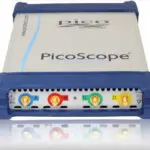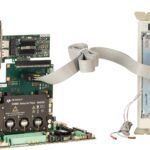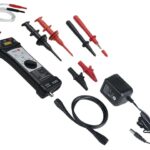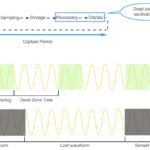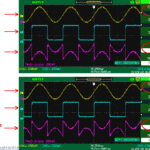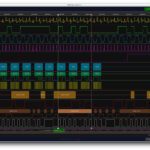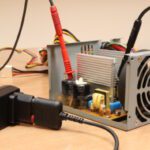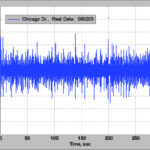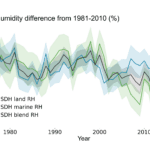USB oscilloscopes are highly versatile instruments. With the right software, they can perform functions usually reserved for spectrum analyzers and digitizers. In some cases, however, special instruments are needed for optimal results. This FAQ compares the functions of oscilloscopes, spectrum analyzers, and digitizers with USB interfaces. They are called USB devices because they connect to […]
What’s the difference between a PCIe analyzer and jammer?
Protocol analyzers and jammers let you test and troubleshoot the performance of PCIe interconnects. From generation to generation, PCIe speeds double. Today’s protocols can be challenging to test and qualify. In addition, advanced applications such as the non-volatile memory express (NVMe) solid-state drive (SSD) memory protocol developed specifically for use with PCIe require sophisticated testing […]
What hardware accessories can you attach to a USB oscilloscope?
A wide range of hardware accessories are available for USB oscilloscopes. This FAQ reviews a few of the more popular options including a variety of probes plus wireless synchronization of multiple USB oscilloscopes and chassis that can combine and synchronize USB oscilloscopes with other instruments like arbitrary waveform generators and multimeters. Probes and more probes […]
What are the important specifications of USB oscilloscopes: Part 2?
USB oscilloscopes can be highly useful design, development, and testing tools. Like many tools, they need to be optimized for specific use cases. This second FAQ looks at specifications for triggering, input ranges and probes, zooming, and control software. Part 1 considered specifications for the number and types of channels, bandwidth, sample rate, refresh rate, […]
What are the important specifications of USB oscilloscopes? part 1
USB oscilloscopes are compact and low-cost. If properly specified, they can be highly capable instruments. This FAQ reviews some important USB oscilloscope specifications including the number of channels, sample rate, bandwidth, refresh rate, and memory depth. Part 2 of this series considers specifications (available Sept. 8) for triggering, input ranges and probes, zooming, and control […]
What specialist software is available for USB oscilloscopes? part 2
This FAQ looks at software that can synchronize multiple oscilloscopes, perform mathematical functions, and transform a basic USB oscilloscope into multiple instruments. A USB oscilloscope consists of signal capture and conditioning electronics, a personal computer (PC) that can be a laptop, tablet, or desktop, plus PC software. The availability of application specialist software is a […]
What specialist software is available for USB oscilloscopes? part 1
USB oscilloscopes capture analog and digital signals. Through software, engineers can analyze protocols and logic signals. By adding a D/A converter, a USB oscilloscope can also become a waveform generator. A USB oscilloscope consists of the signal capture and conditioning electronics package, a personal computer (PC) that can be a laptop or tablet unit, or […]
What’s a USB oscilloscope?
By connecting to a computer, a USB oscilloscope lets engineers offload screens and compute-intensive functions to the host, which reduces needed bench space and brings portability. Oscilloscopes are sometimes grouped into three types, benchtop, portable, and USB. The first two types are self-contained, but USB oscilloscopes are not. They consist of the electronics that capture […]
Quantifying and measuring non-electrical phenomena: Vibration
Vibration is an important design consideration in many electronic applications such as industrial, automotive, aerospace, and marine systems, and consumer white goods and disc drives. Even electronic devices designed for use in relatively vibration-free environments can be subjected to potentially damaging vibration during shipment. The concepts related to vibration also find utility in computer graphics, […]
Quantifying and measuring non-electrical phenomena: Humidity
Humidity is the concentration of water vapor in the air. Too much or too little humidity can be detrimental to the functioning of electronic devices. This FAQ begins by looking at some basic concepts related to humidity and the impact that humidity can have on electronics. It then looks at the importance of using humidity […]
